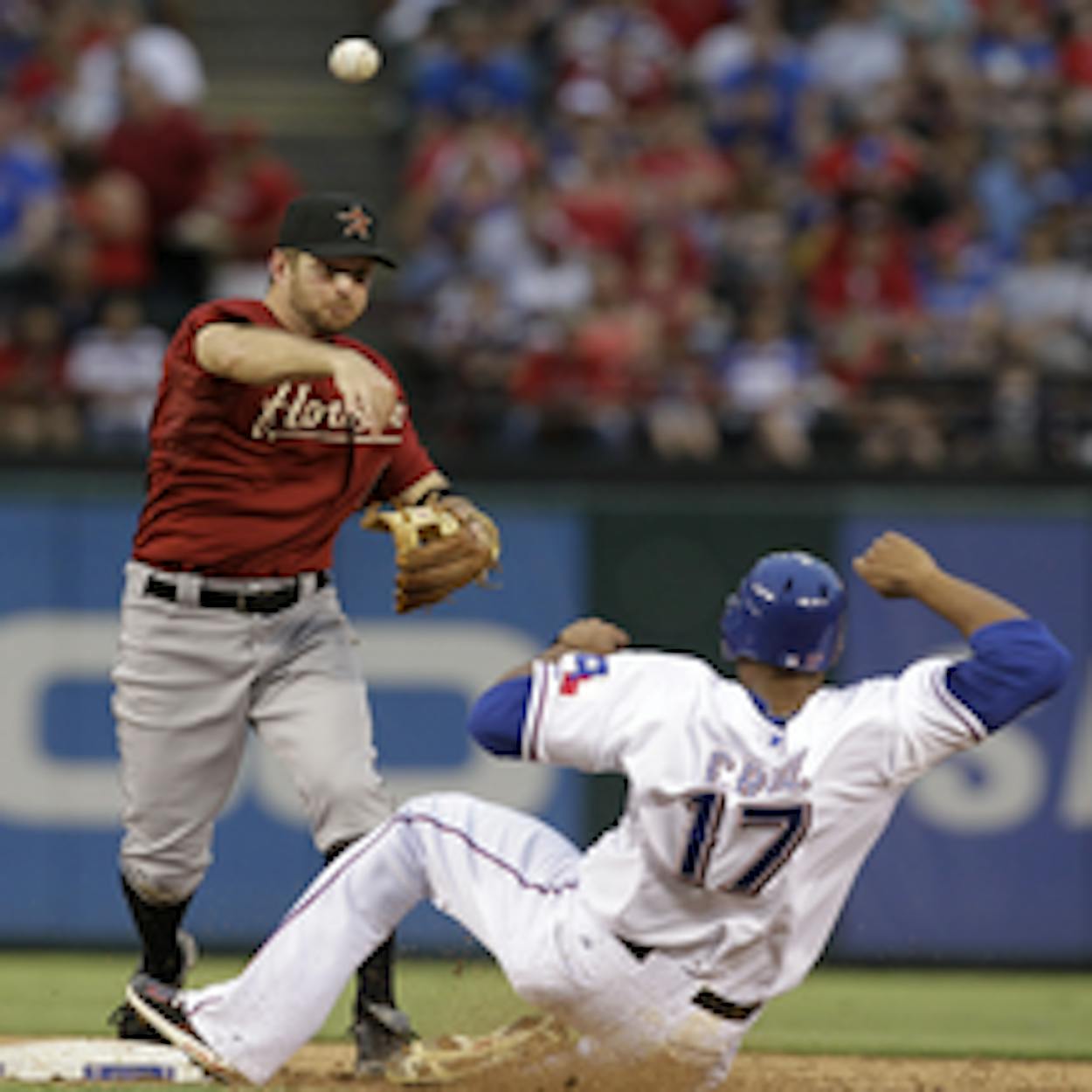Can a rivalry be made? Last week, the Houston Astros and the Texas Rangers kicked off their annual interleague matchup amid rumors of a Major League Baseball realignment plan that could transplant the National League Central Astros into the American League West, pitting the two teams directly against each other.
“Is the mystique of the Lone Star Showdown nearing an end?” asked the Fort Worth Star-Telegram the day before the series opened.
Well, no, because the annual six-game series never had mystique. It’s also called the Lone Star Series. “Lone Star Showdown” is the State Farm-sponsored name for all athletic contests between the University of Texas and Texas A&M, two teams that have exactly the sort of hate-filled rivalry the Astros and Rangers might finally know if the realignment happened.
The first Lone Star Series game was at the Ballpark in Arlington in June 2001. Excitement was only sort of high. “It’s not like the Yankees-Mets or the Cubs-White Sox,” the Astros star Jeff Bagwell told The Associated Press at the time.
I was there that night, with an extra ticket that the scalpers in the parking lot would only offer me $3 for. “The Rangers are 27 games out!” one argued, inarguably. The Astros, which back then had the better franchise, won in extra innings, but with both teams going 3-3 over the series, the Rangers earned the Silver Boot (a trophy the two teams started playing for in 1992 during spring training) on the basis of aggregate runs scored. Yup, just what Texas likes out of its rivalries — to settle things the way they do in soccer.
Since then, both teams have made it to — and lost in — the World Series, but the Lone Star Series hasn’t gotten much more exciting. The Rangers and Astros are no more than novelty opponents, their annual meetings representing less than 4 percent of their 162-game schedule.
Of course, that could all change if they met nearly 20 times a season as divisional rivals.
The speculation started with a June 12 blog post by Buster Olney of ESPN. Citing anonymous sources “familiar with the discussions,” Olney said the baseball players’ union, which has veto power over any move, was in favor of realignment. He also suggested that other Major League Baseball owners could make realignment a condition of Drayton McLane’s sale of the Astros to Jim Crane, a Houston businessman, which has still not been officially approved.
This is on the table as a matter of logistics, not theatrics: Major League Baseball wants to rebalance the leagues. Currently, the American League has 14 teams, with just four in the A.L. West; the National League has 16, with six in the N.L. Central.
Richard Justice, a Houston Chronicle sports columnist, came out in favor of the switch (though he has since put the odds of its actually happening at 25 percent, noting that both McLane and Crane oppose it). Detractors argue that the rivalry is not sufficiently intense to justify the move.
“I’ve yet to see anybody, aside from Drayton McLane, who gives a damn about the series,” wrote John Royal, a blogger for Houston Press.
But that’s precisely why it ought to happen. So-called traditional rivalries — even between natural geographic foes — are highly overrated. Familiarity and pennant races are what breed contempt. The Rangers’ biggest rival just might be the Yankees, not only because they play in the same league, but because they have a playoff history that fuels their regular season meetings.
The very real heat that exists between the Astros and the St. Louis Cardinals is entirely a product of division battles, and especially, the wild-card era, which allowed the two teams to meet in the National League Championship Series in 2004 and 2005. Otherwise, the enmity is unrequited — St. Louis fans reserve their real hate for the Chicago Cubs and Cincinnati Reds, teams their great-grandfathers were booing in the early 1900s.
Even the most hallowed interleague rivalries are not between two teams from the same state, but two teams from the same city.
Change, of course, is something people resist simply because it’s change. But N.L. fans are especially resistant. They see their squads as the protectors of what is pure about the game, preservers of the sacred strategies — double-switches, sacrifice bunts — that come with letting woeful pitchers swing the bat. Moving to the American League would mean that the Astros would adopt the much-maligned designated hitter rule. Then again, this is Houston — home of NASA, oil money and the first breast enhancement. What is the often-overpaid addition of a designated hitter if not implants for a baseball team?
If realignment happens, the Rangers-Astros rivalry might require some time to take its place in the pantheon of sports antagonisms, but knee-jerk city hatred amped up by the passion of a pennant race is a perfect recipe for “mystique.”
Sure, the move would eliminate the almost entirely fantastical prospect of an all-Texas World Series, but double-digit regular season meetings and the much greater possibility of A.L.C.S. tussles trump those slim odds anyway. The first meaningful September game the two teams played would instantly become the greatest contest in the history of the rivalry — no silver boot required.








